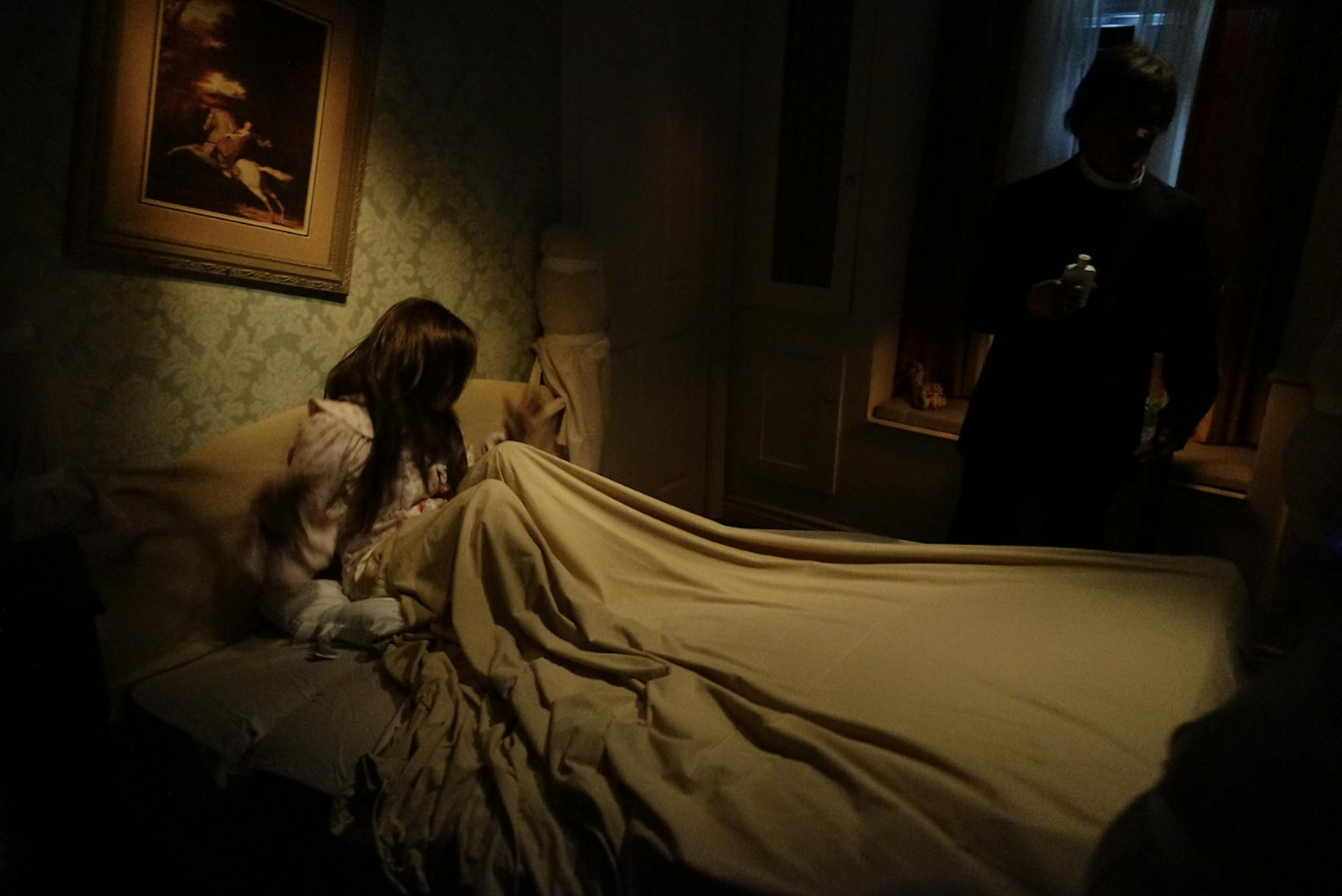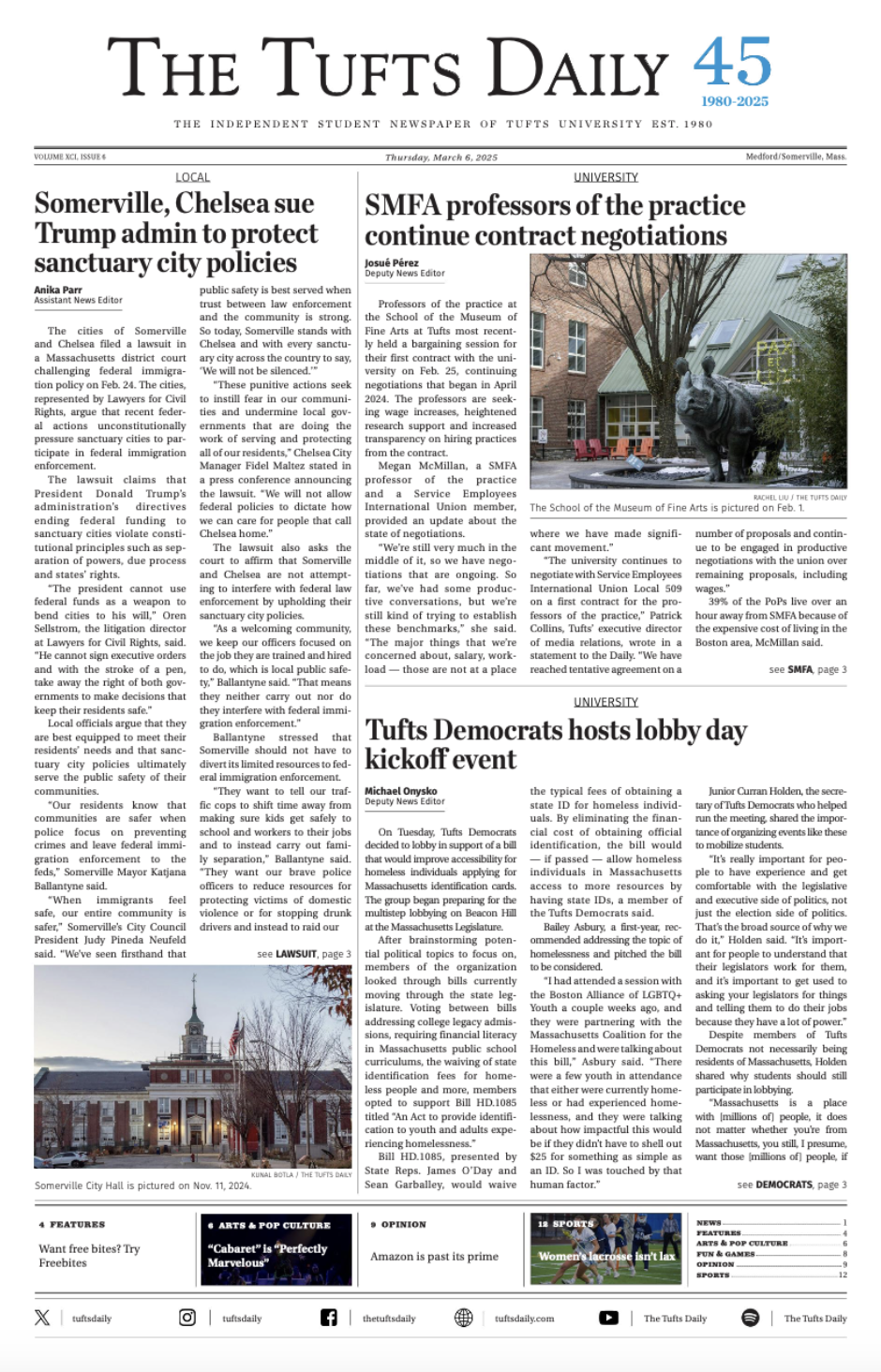Imagine a typical wintery day in 1974 — the new year has set in, the holidays are almost over and you want a last hurrah before returning to the rat race. At the cinema, a poster of a mysterious man shrouded in the glow of a lamppost catches your eye, and warnings from quaking cinemagoers only deepen your resolve. Perhaps you are in need of a thrilling watch or are seeking to ruin your sleep schedule (and sense of inner peace, temporarily). Whatever the case, in you march, popcorn in hand. Not long after, once the film has commenced, it becomes difficult to differentiate between the screams of characters and audience members, and health emergencies have commenced around the theater. Once you leave, the spine-chilling score reverberating in your ears, you’re probably going to feverishly warn your friends not to watch the film, which only heightens the aura surrounding the movie. That was, and still is, the power of William Friedkin’s “The Exorcist.”
Released on Dec. 26, 1973, now 50 years ago, “The Exorcist” is a supernatural horror film based on the novel of the same name by William Peter Blatty, and is widely considered to be one of the greatest horror movies ever made and a landmark in the genre as a whole. Set in Georgetown, Washington D.C., the movie follows Hollywood star Chris MacNeil (Ellen Burstyn) and her pre-teen daughter Regan (the eternally frightening Linda Blair) as they confront a demon who will stop at nothing to wreak havoc on their domestic bliss. Aided by Catholic priest Damien Karras (Jason Miller), who must face his own crisis of faith, and the more experienced Father Lankester Merrin (Max von Sydow), the family takes its captivated (or captive) audience on a gripping two-hour journey, complete with arresting cinematography, religious iconography and horrifying gymnastics.
Several scenes from the movie went on to become iconic pop culture references. Ask someone who the protagonist of “The Exorcist” is and they may not have a clue, but show them a GIF of the chilling spider walk or a meme of a possessed Regan MacNeil, and reactions will range from a chuckle to a wince. My first memory of the movie was seeing the Regan doll at the Museum of the Moving Image in New York City, which was accompanied by a small screen near the exhibit playing some choice scenes on a loop. Those who viewed it cycled through cringes of revulsion and giggles at the sight of projectiles of pea soup hurtling at an unsuspecting adult, all before returning to a state of irrational fearfulness at the prospect of encountering the possessed preteen in the middle of the night.
Much of the initial buzz around “The Exorcist” arose not only from the movie, but from the moviegoing experience as a whole. A 1974 New York Times article by Judy Klemesrud described the scene, noting that masses of attendees waited like “sheep in the rain, cold and sleet for up to four hours.” She also relayed the observations of a guard at a movie theater. “A number of moviegoers vomited. … Others fainted, or left the theater, nauseous and trembling,” she wrote. “Several people had heart attacks, a guard told me. One woman even had a miscarriage, he said.” Klemesrud delved into the far-reaching appeal of the movie, noting the morbid curiosity of many moviegoers. “It seemed that the largest group, after the ‘I‐read‐the-book’ people,” she wrote, “were the ‘I-must‐be‐crazy‐to‐be here’ people.”
For many, “The Exorcist” also seemed to address certain aspects of ongoing political discourse at the time of its release. In her paper “Somewhere between science and superstition,” scholar Amy C. Chambers wrote that the movie “connects the worlds of science and religion through their individual responses to the seen and unseen.” The limitations of science are heavily depicted in the movie, such as when MacNeil approaches Karras after medical procedures fail to produce a solution. One of the most stomach-turning scenes in the film is the cerebral angiography, which rivals the initial stages of the titular exorcism in its intensity. In a similar vein, Karras’ crisis of faith calls to mind the re-evaluation of values that was taking place in the American socio-political sphere at the time, amidst the Vietnam War and the aftermath of the Watergate scandal. Writer and academic Troy Rondinone thus situates “The Exorcist” alongside successive movies like “One Flew Over the Cuckoo’s Nest” (1975) and “Halloween” (1978) as ones that dared to tackle themes of institutional decline.
Commenting on the legacy of the film, Paul Driskill, a Ph.D. candidate studying the intersection of fiction and science writing in an evolutionary context, as well as a Tufts ExCollege instructor currently teaching a class called “The Monsters that Make Us,” noted how some of the film’s themes still endure in the horror franchises of today. “One of the things the film did really well was representing the limits of medical science to address either a psychological malady, or in the case of the film, a fairly explicit spiritual inhabitation,” he said in an interview.
Aside from its iconic status in pop culture, it can be confidently said that “The Exorcist” helped legitimize horror as a genre. It was the first horror movie to be nominated for the Academy Award for Best Picture, paving the way for movies such as “Jaws” (1975) and “The Silence of the Lambs” (1991), the latter of which ended up taking home not just Best Picture but the “Big 5” Oscars award categories.
“I wouldn’t [have been] surprised if there was an eruption of spooky, haunting, movies that followed this,” Driskill said. “I think any well-done horror movie legitimizes horror. … What it shows is that you can have those gruesome horror elements, but if they’re superimposed correctly on what is otherwise a really effective narrative … that demonstrates that a horror [movie] doesn’t need to just be about the horror, that maybe really effective horror movies are about much more than just the monster or the possession.”
Driskill also lauded “The Exorcist” for its more subtle elements that add to the ominous nature of the film. “You have this over-the-top gory stuff, but then you have really subtle things — those are probably the scariest,” he explained, noting the Ouija board scene as an example. “You see that the planchette moves without either of them touching it, but then Chris thinks that it’s Reagan who moved it, and Reagan is like, ‘No, it’s Mr. Howdy.’ Mr. Howdy, to me, is a much more terrifying character than the actual demon,” he joked.
So, what better way to commemorate the 50th anniversary of this classic than with a watch party? After all, nothing puts one in the festive spirit like family drama, Christian imagery and a child shouting expletives. Indeed, many can certainly empathize with having to deal with an unwanted presence around the holiday season, though it is almost certain that the demon’s mischief pales in comparison to the destruction wrought by a drunk uncle. If you’re in search of a bigger fright though, look at reviews of successive movies in the franchise — check out ratings for “Exorcist: The Beginning” (2004) on Rotten Tomatoes if you’re feeling particularly brave. Happy watching!






